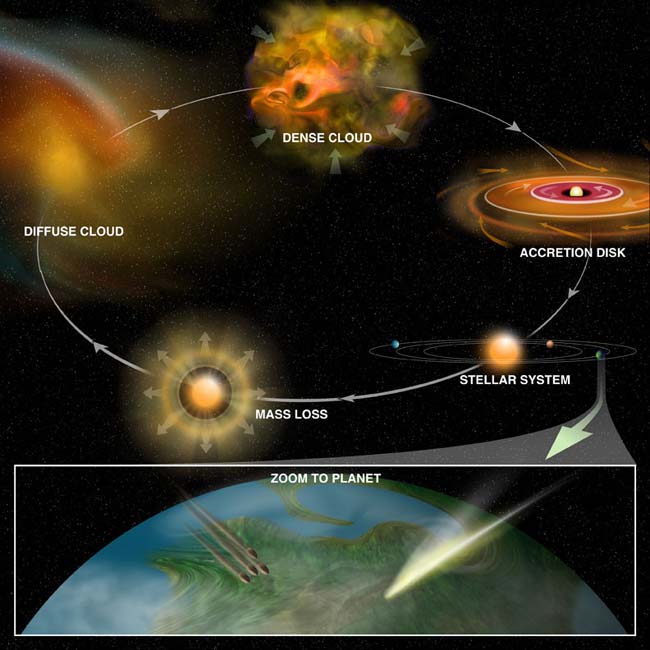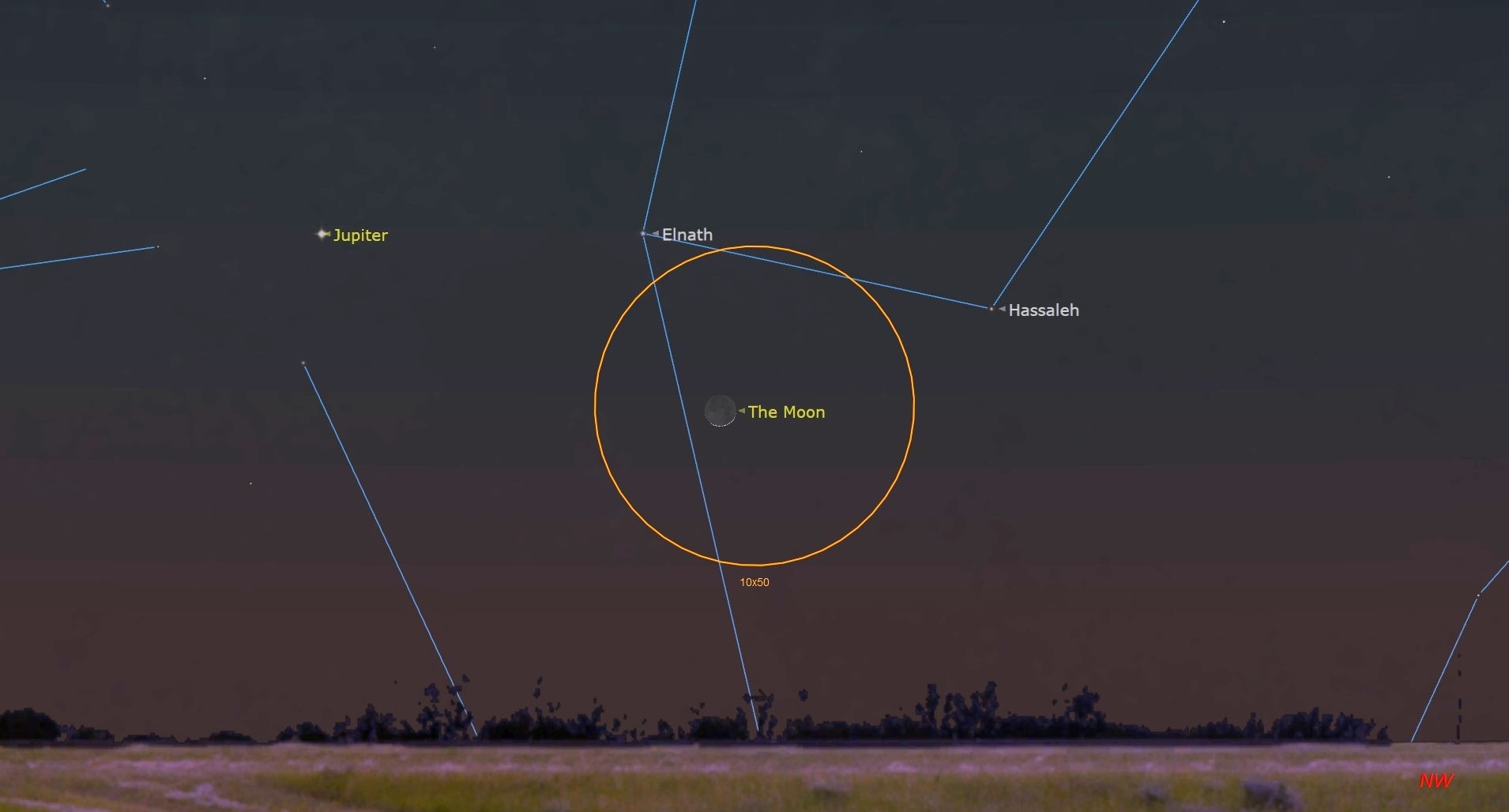
A two-yearsurvey of enormous interstellar dust clouds has turned up eight organicmolecules in two different regions of space. One is a stellar nursery awash inlight while the other is a cold, starless void.
Thefinding, detailed in the current issue of Astrophysical Journal,supports other recent studies suggesting molecules important for life commonlyform in the gas and dust clouds that condense to form stars and planets.
Themolecules were discovered using the Robert C. Byrd Green Bank Telescope (GBT),a large radio telescope located in West Virginia.
"Findingeight [organic] molecules in the space of two years is quite remarkable,"said study leader Jan Hollis of NASA Goddard Space Flight Center.
Lifemolecules
The newlydiscovered molecules are made up of 6 to 11 atoms each and are classified asorganic because they contain carbon.
Five of themolecules were discovered in Sagittarius B2(N), a star-forming dust cloudlocated 26,000 light-years from Earthnear the center of the MilkyWay Galaxy. This stellar nursery is the largest known repository of complexinterstellar molecules.
Get the Space.com Newsletter
Breaking space news, the latest updates on rocket launches, skywatching events and more!
The otherthree molecules were found in the Taurus Molecular Cloud (TMC-1), located only 450light-years away. TMC-1 is starless; it is cold and dark and has a temperatureof only 10 degrees above absolute zero.
"Thediscovery of these large organic molecules in the coldest regions of theinterstellar medium has certainly changed the belief that large organicmolecules would only have their origins in hot molecular cores," saidstudy team member Anthony Remijan of the National Radio Astronomy Observatory(NRAO). "It has forced us to rethink the paradigms of interstellarchemistry."
Just becausea molecule is organic does not mean that it is made by living things. In fact,many of the newly spotted molecules are poisonous to organisms on Earth, Hollissaid. But one of the molecules found in Sagittarius B2(N), called acetamide,contains a type of chemical bond important for linking together amino acids,the molecular building blocks of proteins.
Made up of9 atoms, acetamide "is the largest molecule found in space that has thatbond," Hollis told SPACE.com.
Spacetumbleweeds
The moleculesare thought to form by two main mechanisms. In the first, simple chemicalreactions add an atom to a molecule that is stuck to the surface of a dustgrain afloat in space. The second method involves chemical reactions betweenneutral molecules and highly reactive molecules called radicals.
Onceformed, the molecules are shaken loose from their dust-grain homes by rapidlymoving shockwaves. As the freed molecules tumble end-over-end in space, they can emitor absorb radiation at precise radio frequencies unique to each type ofmolecule. Astronomers identify the molecules based on these radio frequencies.
Within adust cloud, thousands of billions of molecules undergo the same types ofrotation, emitting and absorbing the same radio frequencies. The end result isa signal strong enough to be detected by instruments on Earth.
Thenewfound molecules bring the total number of biologically-relevant moleculesfound in interstellar space to 141. Scientists have previously found benzene,a ring-shaped carbon molecule important for life on Earth, around stars andintact amino acids in meteorites that have crash-landedon Earth.
Even morecomplex molecular creations might be possible in space, experiments suggest. Inone study, scientists simulated deep space conditions in the laboratory andcreated small structures resembling cell wallsin living organisms.
A casefor extraterrestrial life
Takentogether, the findings suggest that the chemical ingredients necessary for lifebegan taking shape long before our planet was formed.
Manyscientists now accept the notion that ancient meteorites and comets helpedjumpstart life on our planet by bringing a significant amount of water, organicmolecules and even amino acids to early Earth.
Scientistsnow think those imprisoned organic molecules were likely created in the massivedust and gas clouds that eventually coalescedinto planets and stars, comets and meteorites. Dust clouds are thought to formwhen events such as novasand supernovascaused chemical elements and molecules created during thermonuclear reactionsinside stars to be ejected into space.
Hollis sayshis team plans to keep using the Green Bank Telescope to continue searching forother biologically-significant molecules.
"Froma research and astrobiology point of view, it's been a goldmine," he said.
- Top 10 Star Mysteries
- Top 10 List of Habitable Stars to Guide Search
- Life-Building Carbon Rings Found in Space
- Components of Stars Prove the Delicacy of Life
- Are We All Aliens? The New Case for Panspermia
- Seeds of Life are Everywhere, NASA Researchers Say
Join our Space Forums to keep talking space on the latest missions, night sky and more! And if you have a news tip, correction or comment, let us know at: community@space.com.
Ker Than is a science writer and children's book author who joined Space.com as a Staff Writer from 2005 to 2007. Ker covered astronomy and human spaceflight while at Space.com, including space shuttle launches, and has authored three science books for kids about earthquakes, stars and black holes. Ker's work has also appeared in National Geographic, Nature News, New Scientist and Sky & Telescope, among others. He earned a bachelor's degree in biology from UC Irvine and a master's degree in science journalism from New York University. Ker is currently the Director of Science Communications at Stanford University.
